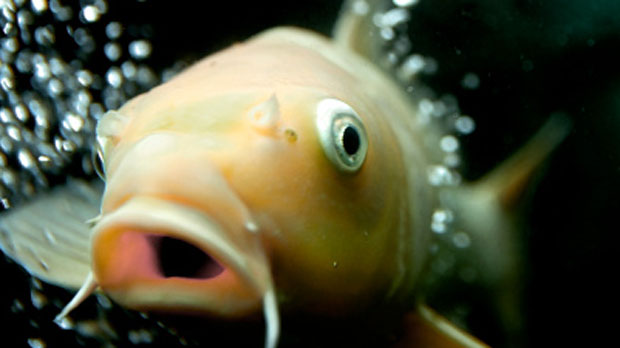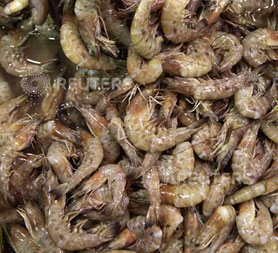Dispatches: Britain’s fish unwrapped
 Alex Thomson
Chief Correspondent
Alex Thomson
Chief Correspondent
Channel 4 News Chief Correspondent Alex Thomson investigates the fish sold on Britain’s high street for Dispatches – to find out where it is sourced, how it is processed and what is actually in it.

If there is one thing – well OK, two things, that our big supermarkets and food producers want to talk about, they have to be sustainability and traceability. The major global food suppliers and supermarkets insist that they want their business to be as sustainable and green as possible for as long as possible.
On traceability they will passionately declaim they want you to know as much as possible about where your food has come from – how it has travelled from producer via middleman to your plate – the global food supply chain.
And nothing travels quite like fish. The most traded commodity internationally, among anything – let alone just food. In 2009 alone, UK consumers spent nearly £6bn on seafood products. In all likelihood they had only the faintest notion about where their seafood had come from? How? Under what conditions?
As Dispatches will show, from the biggest global retailers to producers and small fishermen, the story of sustainability of fish stocks, the honesty with which they are sold, and the transparency about how they have travelled from sea to supermarket to supper are often troubling.
Not a programme to duck a challenge, Dispatches will show how one of the very biggest global players in food retail and certainly in the UK – Tesco – has failed its customers on selling that most central player in the fish market – the good old-fashioned cod.
Or rather the good old-fashioned, over-fished and somewhat threatened cod. How can it be that such a major player is retailing cod fillets as sustainable and still plentiful Pacific cod – when our DNA testing of the fillets reveals a fifth of our sample to be Atlantic Cod -a quite separate and very much more threatened species of the fish?
We’ll take you through the relatively simple DNA testing process that shows exactly what is in the packet on a supermarket shelf – as opposed to what the punter is being told they are buying.
On the vital issue of transparency we take you a world away from those cosy restaurants which loudly proclaim how and where the steak on your plate has been sourced and how local that might be. For in the prawn markets of the world for instance, very little transparency exists. How do we know? Because we sent a team undercover to the prawn pools of Bangladesh.
Go down to the prawn farms themselves and you find farmers who have never seen or heard of official inspecting; who have no clue where their prawns are going.
Supplying western markets with farmed prawns is one of the biggest foreign cash-earners in this country. Talk to the EU official responsible for policing it in terms of traceability of where prawns are coming from and you get a reassuring picture of streamlined supervision, visiting officials: an orderly, policed industry.
Go down to the prawn farms themselves and you find farmers who have never seen or heard of official inspecting; who have no clue where their prawns are going; middlemen in the chain with no idea where they’ve come from.
Up and down the prawn ponds and markets, routine practices of bulking out produce with various liquids…dosing ponds with banned pesticide to try to prevent disease…fly-blown markets where stray dogs roam free.
And many of these prawns are eventually heading to the EU generally – the UK particularly. Transparency and traceability? The reality is more opaque than the muddy waters of the prawn-pools themselves.
When produce reaches the supermarkets is there much of this prized transparency? It seems they could do a lot more, to be candid. Consider if you will, all those large signs which proclaim “fresh fish” with the parsely sprigs, the lemon slices and glistening fish spread seductively upon glinting ice beds.

But look a little more closely at the small print few of us ever read (which is no doubt why they print it small) and what do we find? All kinds of information about how this product might have been “previously frozen”. So it it really fresh fish at all?
And when it comes to freezing, few businesses get frozen up quite like big fish business. The international trading currency of fish is the block: 7.5 killo slabs of fish. It can be traded and re-traded several times as it lies in deep-frozen storage, quietly ageing away in Grimsby, at -26C for three, six, nine months or more.
All of this is legal, but fish storers themselves will tell you what anybody with a freezer and a memory lapse has known for years – after a while fish just gets “freezer-burn” and turns into something with all the flavour-allure of cardboard.
There is no regulation on the length of time fish can remain deep-frozen. It simply has to be passed fit for human consumption and beyond that, the issue of freezer-time is pretty much left for the industry to police itself.
And do consumers have any clue about how long the fish in their fingers or fish cakes was stored for? Of course not.
Inspectors found rat droppings along with fish stocks over half a decade old.
There will, of course, always be rogue operators and rarely enough inspectors effectively to police them. One such business in Lincolnshire was found to be maggot-infested. Amid the stench, inspectors found rat droppings along with fish stocks over half a decade old. Over 200 tonnes had to be destroyed. But much had already gone out from this foul fish storage facility – considerable amounts to the posher restaurants of the capital.
Is nothing sacred? It seems not. Not even the central plank of British culinary brilliance and tradition – the corner chippy. Not all the cod and chips really is cod and chips it seems. On the potato side of things we can be relatively assured. But some of the cod passed off to the unsuspecting punter, turns out to be pangasius – a Vietnamese catfish nurtured in the distincly un-codlike waters of the Mekong Delta.
Dangerous? No. Your pangasius steak is a welcome addition to any table. Just so long as it’s sold as pangasius or Vietnames River Cobbler but please, not cod. If they get to you and you’re up to this scam, trading standards have been able to hit fish and chip shops with considerable fines and legal costs.
Nobody’s pretending here that applying those ever-popular words traceability, transparency and sustainability to a businees as economically and geographically diverse as fishing is going to be easy. Obviously it makes sourcing your slab of Aberdeen Angus child’s play by comparison.
But the big traders, producers and retailers cannot have it both ways. If they want to talk sustainability and traceability and if we really want to know what we are eating and how we came to eat it, those we buy from have got to do more – a lot more.